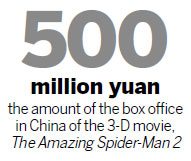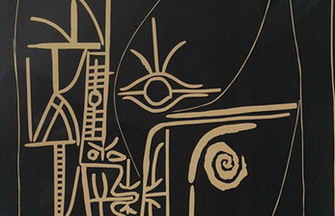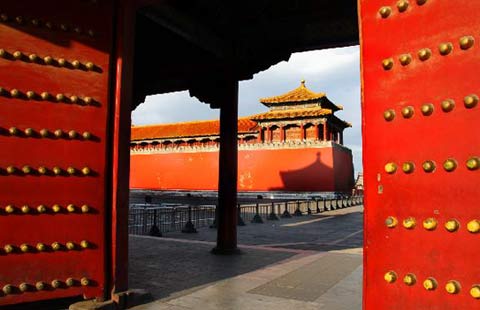 |
|
Provided to China Daily
|
Conversion to 3-D
Most of the filmmakers prefer to convert 2-D films to 3-D products at the postproduction stage, because it is cheaper than 3-D on-set shooting. "Domestic films that spend more than 100 million yuan in production will go for 3-D on-set filming, while those whose production budget is 50-80 million yuan will opt for 2-D-to-3-D conversion," Shen says.
"The cost for 2-D-to-3-D conversion has declined in the country, and some could be done for only 3 million yuan. But for our company, the threshold is 5 million yuan for this service," Shen says. "A part of even the movies that opt for on-site 3-D shooting requires 2-D-to-3-D conversion during postproduction," he says.
The screening process in theaters, too, affects moviegoers' viewing experience. Many of the negative comments on 3-D productions released in the country have something to do with the theaters, Peng says.
"Some theaters lower the brightness of the projection light, an important part of the screening equipment, to prolong its service life and thus darken the picture, leading to complaints from the audience."

Another reason why domestic filmmakers opt for 3-D productions is the financial reward from the government. If a domestic movie in 3-D format or tailored for giant screenings grosses between 50 million yuan and 100 million yuan at the box office, the government will reward its makers with a subsidy of 1 million yuan, according to a policy issued by the State Administration of Press, Publication, Radio, Film and Television, China's film industry watchdog. The reward is 2 million yuan for films grossing between 100 million yuan and 300 million yuan, and 5 million yuan for those making between 300 million yuan and 500 million yuan.

























 Raymond Zhou:
Raymond Zhou: Pauline D Loh:
Pauline D Loh: Hot Pot
Hot Pot Eco China
Eco China China Dream
China Dream China Face
China Face





